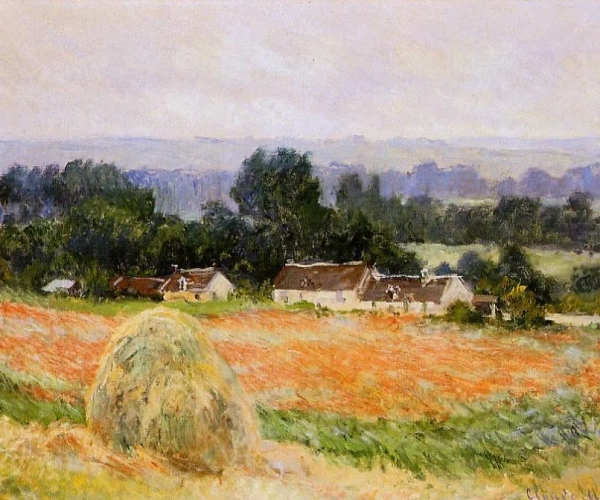A Haystack
As an academic researcher, I can analyze and discuss the artwork "A Haystack" by Claude Monet. This painting is part of Monet's iconic "Haystacks" series, which he produced between 1890 and 1891. ""A Haystack"" depicts a solitary haystack set against a vast and luminous landscape, with the changing light and weather conditions evident in the varying hues and textures of the scene. The composition and colors capture the fleeting moments of nature, showcasing Monet's mastery in portraying the transient effects of light and atmosphere.
Monet's innovative use of color and brushwork in "A Haystack" reflects his commitment to capturing the essence of a scene through bold, expressive strokes. He skillfully conveys the play of light on the haystack and the surrounding fields, infusing the painting with a sense of movement and vibrancy. The juxtaposition of warm and cool tones adds depth and dimension to the work, enriching the viewer's experience of the rural landscape.
Furthermore, the haystack itself becomes a focal point of contemplation, embodying the cyclical rhythms of rural life and the interplay of human labor and the natural world. Through his exploration of light and color, Monet transforms this everyday subject into a mesmerizing study of perception and sensation, inviting viewers to immerse themselves in the beauty and serenity of the countryside.
Overall, "A Haystack" exemplifies Monet's unparalleled ability to distill the essence of nature into a visual symphony of light, color, and form. This masterpiece stands as a testament to Monet's artistic vision and his profound impact on the development of Impressionism, inspiring generations of artists and art enthusiasts alike.







No Comments Yet...